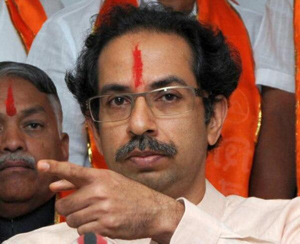
The Narendra Modi government should adopt an aggressive "tit for tat" policy towards Pakistan and should teach it a lesson if it creates trouble for India, NDA constituent Shiv Sena said today.
"A tit for tat policy should be there for Pakistan. If it is okay with us, we should be okay with them. If it creates trouble, we should teach it a lesson," Sena chief Uddhav Thackarey told reporters.
Asked whether the Sena has changed its opposition to cricketing and cultural ties with Pakistan, he indicated that India should stop playing with Pakistan which, he said, is resorting to infiltration from across the border.
In reply to questions on Shiv Sena's participation in the government, he said that it was going to be there but there have been no talks between his party and BJP on the issue so far.
On whether the Sena would demand Maharashtra Chief Minister Prithviraj Chavan's resignation in the wake of the debacle of the Congress-NCP alliance in the polls, Thackarey said if he resigns, who is there to take his place as Chavan was himself "imported" from Delhi.
Having a dig at Congress chief Sonia Gandhi, he said that she offered to quit taking responsibility for the debacle, but did not.
Replying to a question, Thackarey said that he was not interested in becoming the convenor of the NDA. He suggested that his priority now was the assembly elections in the state due by October but steered clear of questions whether he would like to be the chief minister of the Shiv Sena-BJP alliance.
He said that a delegation of 42 MPs of the Shiv Sena-BJP and other allies in the state would come to Delhi after swearing in of Modi as prime minister to press for urgent relief to the farmers in the state hit by hailstorm.
The delegation would also impress upon the Centre for greater share of the revenues from Mumbai for the development of Maharashtra.
Shiv Sena is the oldest ideological ally of BJP and the second largest constituent of NDA after the saffron party. It won 18 seats in the Lok Sabha from Maharashtra.








Comments
Add new comment